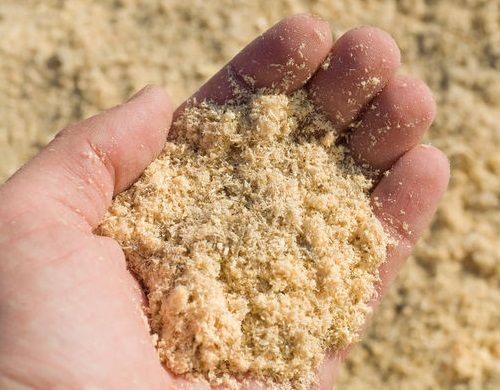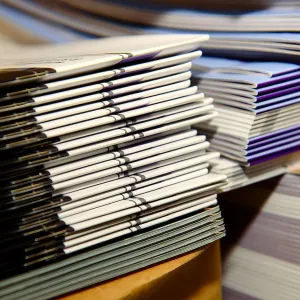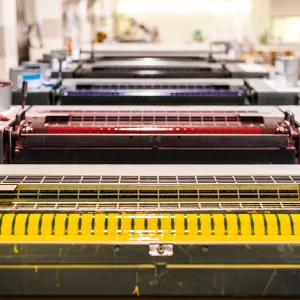Matte vs Uncoated: Which Paper is better for your Project?

estimated reading time: 5 minutes
Matte Paper vs Uncoated Paper
When requesting a quote for a print project that requires a
non-glossy finish, some clients will occasionally specify Matte Paper when they are
actually seeking Uncoated Paper. The
confusion arises because matte paper and uncoated paper both offer a non-glossy
finish.
Though neither matte or uncoated papers are glossy, there are other important differences
that go beyond the sheen level. Matte and uncoated papers undergo different
production processes at the paper mill. Hence, they end up with different characteristics.
These distinct characteristics are what make each one better
suited for certain purposes. So, whether matte paper or uncoated paper is
the better choice for your print project will actually depend on your specific
needs.
Below is an overview of these two paper types to help you
understand what each has to offer…
What is Matte Paper?
Matte Paper is a coated paper. It receives a coating during
its manufacturing process at the paper mill.
Paper coatings can be made from a variety of substances,
including clay, polymers, and pigments. Also, the coating can be applied to one
side of the paper or to both sides.
Traditional paper is made from the wood fibers of trees.
These fibers give raw paper a naturally rough texture. Some paper types receive a coating at
the mill to fill in some or all of this naturally rough texture. The more
coating that is applied, the smoother the texture becomes and the more light it will
reflect.

Glossy stocks have a layer of coating that fills in
all of the rough texture. As such, the surface of the paper becomes very smooth
and slick to the touch. This slicker surface reflects light in a very uniform
pattern, resulting in a high-gloss shine.
Matte stocks, on the other hand, do not receive as much
coating as gloss stocks. Some of the paper's texture is filled in but not all.
As such, the surface of the paper maintains some of its natural rough texture. This
roughness reduces the amount of reflectivity because it scatters light in
multiple directions. Matte-coated paper will exhibit a very slight sheen but it
is much lower than that of a gloss-coated paper.
In addition to adding varying levels of sheen and
smoothness, paper coatings also slow the amount of ink that can seep into the
paper fibers. The thicker the layer of coating, the less ink will be absorbed
into the paper. Hence, gloss-coated stocks do not absorb much ink. This allows
printed images to have very sharp details and vibrant colors.
Because matte coated stocks have a thinner layer of coating,
the porous paper fibers are not completely covered. Hence, some ink will be absorbed
into the paper. Images still maintain good detail but they will appear softer
and have slightly subdued colors.
What is Uncoated Paper?
Uncoated Paper refers to paper that does not receive
any coating during the manufacturing process at the paper mill. Because
uncoated paper maintains its natural texture, it has a courser look and feel
than a coated stock.
Because all of the paper fiber remains exposed, uncoated
paper allows more ink absorption than matte or gloss coated paper. Also, because
no surface coating is applied, the rough texture of uncoated paper prevents it from
reflecting light. Thus, it has no sheen.
A summary of the differences between Matte and Uncoated Paper
Sheen Level -
Matte: Very low sheen. Provides a refined finish without the
high shine of a gloss coated paper.
Uncoated: No sheen.

Surface Texture -
Matte: Because the surface is treated with a coating, matte
coated paper has a smoother surface than uncoated paper. However, it is not as
smooth as a gloss coated stock.
Uncoated: The surface of the paper is porous and somewhat rough
to the touch. This can add an interesting tactile experience to business cards,
invitations, stationery, and other printed pieces used to create a personal connection.
Durability -
Matte: Though a matte coating does not resist dirt or stains
as well as a gloss coating, its resilience is superior to uncoated paper.
Uncoated: The porous surface can readily absorb spills and
stains, so uncoated paper is not recommended for projects that will see
frequent handling or be used near contaminants.
Print Quality -
Matte: Being a coated stock, matte paper controls ink absorption better
than uncoated paper. Some absorption does occur, so ink colors will be appear
more subdued than if printed on a gloss coated stock. However, images still maintain
the necessary level of detail.
Uncoated: Since there is no coating at all, the ink will
absorb more deeply into the paper fibers. As a result, images will appear much less sharp than those printed on a coated stock.
Recommended Uses -
Matte: The subtle sheen of matte paper adds a sophisticated and
refined look to printed pieces. Also, the lack of glare makes printed pieces easier
to read. These features make matte paper a good choice for catalogs, brochures,
and other promotional pieces, especially for high-end products. It is also ideal
for books and magazines that contain a mixture of text and images.
Uncoated: The lack of reflectivity makes printing very easy
to read, even in bright conditions. This makes uncoated paper ideal for text-heavy
books and booklets. In addition, the texture of uncoated paper makes the pages of books
easier to grip and turn. Also, because uncoated paper is resistant to smudging,
it is the preferred stock for anything that will be written upon with a pen or
pencil. This includes workbooks, forms, memo pads, appointment cards,
letterhead, and note cards. Uncoated stocks also offer a nice contrast for projects
that are embossed or foil stamped.

Color Vision Printing is always ready to help!
The type of paper you choose will have a significant impact
on the look and feel of your print project. So it is important to select a
paper stock that provides the properties necessary to achieve your desired
outcome.
If you need some guidance in this regard, Color
Vision will be happy to help you select the best paper type for your
project. Just give us a call at 800-543-6299 to discuss your printing
needs.
Or, if you already know the specs of your project and are
looking for a price, fill out our simple Quote Request form and we will email a
quote to you.
Since 1984, Color Vision has been producing
high-quality printing at affordable rates. So whatever your printing needs may
be, be sure to get in touch. We look forward to assisting you!
Related Articles

How Print Materials Help a Business Accomplish its Goals
Read This Article

Print Marketing: 5 Low Cost Ways to Promote your Business
Read This Article

Printing Proofs: Pay Extra Attention to Contact Information
Read This Article

Discover the Advantages of Offset Printing for Your Business
Read This Article